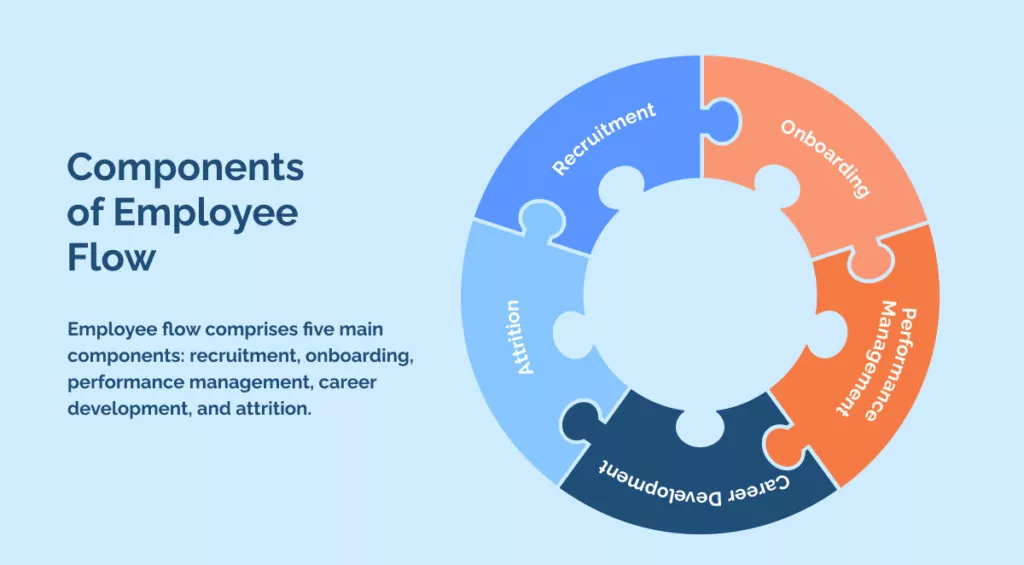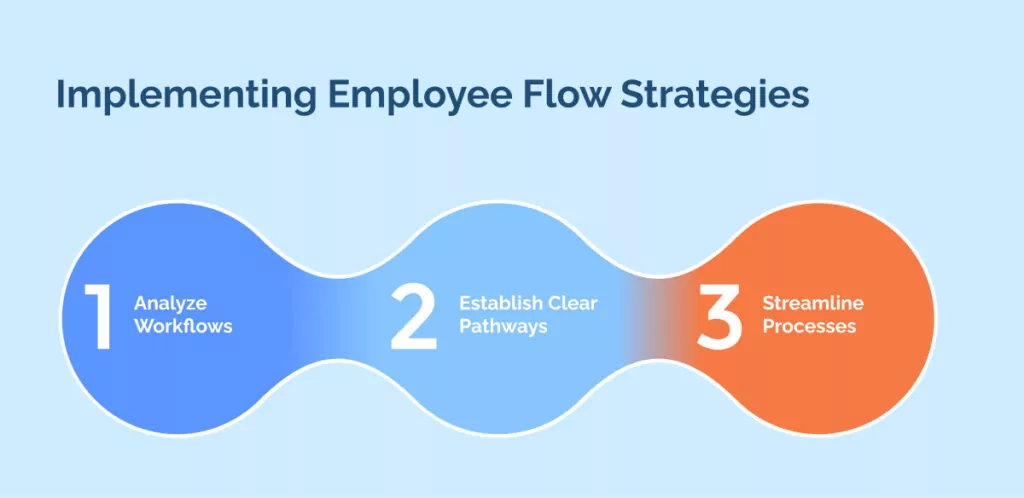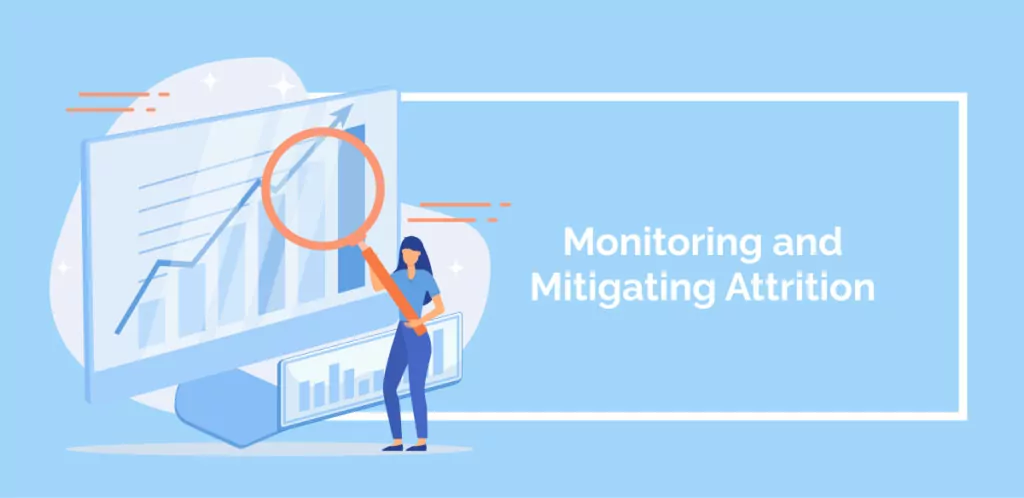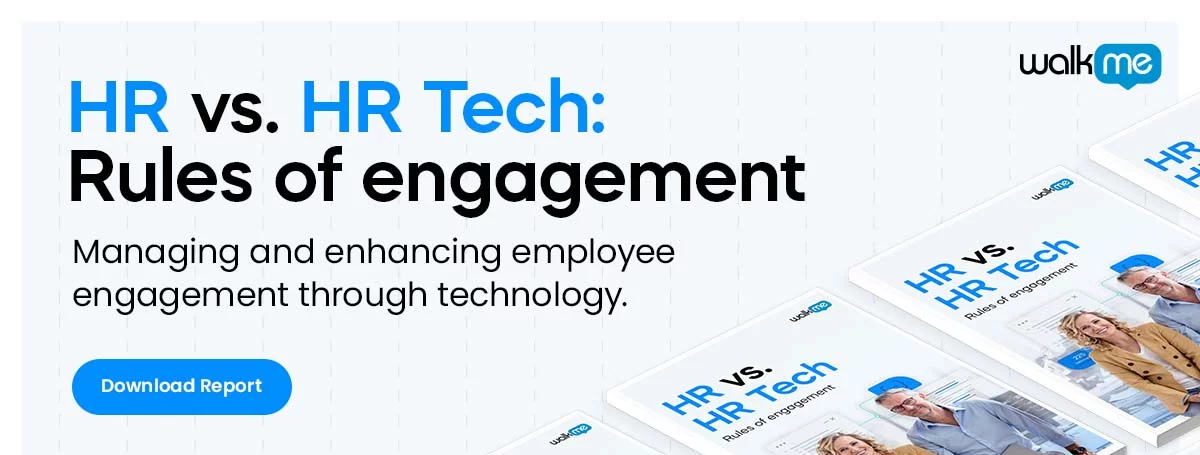
In the ever-changing landscape of business, managers face a myriad of challenges when it comes to understanding and optimizing the flow of employees within their organizations.
Employee flow refers to the movement of employees within an organization, from recruitment to onboarding, career development, and eventually departure. It encompasses the entire employee lifecycle, highlighting the various stages and transitions they go through.
According to McKinsey, employees yearn for trust, social cohesion, and a sense of purpose. They seek acknowledgment for their contributions and a genuinely collaborative team environment. Clarity in responsibilities and ample opportunities for learning and growth are also coveted.
This comprehensive guide delves deep into the intricacies of the employee journey, covering everything from recruitment and onboarding to development and retention. It equips managers with a thorough understanding of the evolving employee expectations shaped by technological advancements and societal shifts. Managers can effectively attract, engage, and retain exceptional talent by recognizing and addressing these changing expectations.
At the heart of this guide lies the recognition that continuous employee training and development are vital components of a thriving modern workforce. As industries evolve and new job roles emerge, organizations must invest in upskilling their employees to maintain a competitive edge.
By the end of this guide, managers will have acquired a comprehensive understanding of employee flow and how it fits into their organizations. They will be equipped with the necessary knowledge to make sound decisions that can help promote successful career journeys for their employees.
Let’s start with a clear definition of employee flow:
What is employee flow?
Employee flow, also known as employee lifecycle management, refers to the systematic process of managing and tracking employees from their initial recruitment and onboarding through various stages of development and ultimately to their departure from an organization.
It involves strategic planning, effective communication, and consistent monitoring to ensure smooth transitions and maximize employee productivity and engagement.
The employee flow process is a continuous cycle that enables greater visibility into the performance of an organization’s workforce. It also helps inform decisions about recruitment, training, and career progression to ensure that employees are adequately equipped with the right skills to maximize their potential.
Now that we have a clear definition of employee flow in mind let’s take a look at its components:
Components of Employee Flow

Employee flow comprises five main components: recruitment, onboarding, performance management, career development, and attrition.
Recruitment:
Recruitment is a multifaceted process encompassing talent acquisition strategies, candidate sourcing methodologies, and rigorous selection procedures designed to identify and attract qualified individuals to fill vacant positions within an organization.
It involves crafting precise job descriptions, leveraging targeted advertising channels, implementing applicant tracking systems, conducting comprehensive resume screening, executing competency-based interviews, and performing thorough background checks.
Effective recruitment practices align organizational needs with candidate competencies, ensure cultural fit, and optimize the talent pipeline for sustained business growth.
Onboarding:
Onboarding is an immersive assimilation process aimed at integrating newly hired employees into an organization, facilitating their socialization, and equipping them with the requisite knowledge, skills, and tools to contribute to organizational objectives.
It entails structured orientation sessions, comprehensive introductions to corporate policies and protocols, thorough training on proprietary systems, technologies, and processes, and fostering connections with colleagues and key stakeholders.
A robust onboarding program bolsters employee engagement, reduces time-to-productivity, and establishes a foundation for long-term success and retention within the organization.
Performance Management:
Performance management entails the systematic process of defining performance expectations, continuously monitoring and evaluating employee performance, providing constructive feedback, and implementing targeted improvement interventions.
It encompasses setting SMART goals, conducting objective performance appraisals, utilizing performance dashboards and metrics, delivering regular coaching and mentoring sessions, and recognizing and rewarding exemplary performances.
Effective performance management frameworks foster a high-performance culture, strengthen employee-manager relationships, optimize workforce productivity, and drive organizational success.
Career Development:
Career development encompasses a range of initiatives and programs aimed at nurturing employee growth, expanding skillsets, and facilitating career progression within an organization.
A holistic approach to career expansion entails tailored learning and development plans, training and upskilling opportunities, job rotations, mentorship and coaching connections, and effective strategies for succession planning. This comprehensive framework ensures professional growth and enhances the quality and effectiveness of career progression.
These robust frameworks empower employees to proactively drive their professional growth, fostering loyalty, commitment, and job satisfaction. Moreover, they cultivate a talent pipeline for critical leadership positions.
Attrition:
Attrition, or employee turnover, refers to employees voluntarily or involuntarily exiting an organization. Attrition management involves analyzing attrition trends, conducting exit interviews, identifying root causes, implementing retention strategies, and enhancing employee engagement.
Strategic attrition management involves various activities, including thorough data analysis, creating predictive models to forecast turnover, developing targeted intervention plans, and continuously monitoring and adapting strategies to mitigate unwanted attrition. By implementing these measures, organizations can ensure continuity, minimize knowledge loss, reduce recruitment costs, and foster a stable workforce.
Now that we have a comprehensive understanding of the components of employee flow let’s take a closer look at how organizations can leverage this process to optimize their workforce and drive business success.
Benefits of Employee Flow

Employee flow offers numerous benefits for both organizations and employees. A few key advantages include:
1. Enhanced Productivity:
Employee flow management is critical to operational efficiency, leading to improved productivity. This process involves strategic task delegation, the establishment of efficient communication channels, and the integrating of collaborative tools. The objective is to ensure a smooth transition of tasks and responsibilities.
Process optimization through employee flow management eliminates unnecessary delays and bottlenecks. It promotes a focus on assigned tasks, contributing to overall productivity. It also allows for the identification of potential workflow inefficiencies or redundancies. These can be addressed by streamlining operations and implementing targeted improvements.
Effective employee flow management facilitates optimal resource allocation. Assigning tasks based on employees’ skills and expertise prevents overburdening or underutilizing resources. This alignment between job responsibilities and employee strengths enhances both productivity and job satisfaction.
2. Reduced Turnover:
Employee flow strategies are instrumental in reducing turnover rates. Providing clear pathways for career development and growth increases employee engagement and commitment. These pathways can be established through mentorship programs, training sessions, job rotations, and performance feedback mechanisms.
Structuring employee flow to address the lack of growth opportunities can significantly reduce turnover. Employees who see potential for advancement within the organization are less likely to seek opportunities elsewhere. In addition, monitoring of employee flow within the organization enables early detection of signs of dissatisfaction or disengagement.
Early intervention to address these issues helps retain valuable talent.
3. Improved Employee Engagement:
Effective employee flow management leads to improved employee engagement. When job responsibilities align with employees’ skills, strengths, and interests, they experience a greater sense of purpose and fulfillment. This alignment is achieved by assigning tasks that match employees’ abilities.
Providing ongoing learning and professional development opportunities also enhances employee engagement. By offering training sessions, workshops, and conferences, organizations demonstrate their commitment to employee success. This investment in employee development fosters engagement and loyalty.
Creating a supportive work environment is another key aspect of effective employee flow management. Open communication, recognition of contributions, and regular feedback and coaching are vital components. When employees feel valued and supported, they are more likely to be engaged, contributing to a positive work culture and improved performance.
Now that we know the importance of employee flow and its associated benefits let’s look at how organizations can successfully implement this process.
Implementing Employee Flow Strategies

Organizations that successfully leverage employee flow strategies are more likely to achieve their strategic objectives and drive business success. To do so, they must adopt an integrated approach with specific protocols.
Here are a few steps to help organizations implement effective employee flow management strategies:
Analyze Workflows: The first step in implementing an employee flow process is to analyze existing workflows. This involves analyzing assigned tasks, roles and responsibilities, communication channels, and collaborative tools. Identifying any redundancies or gaps in the process can help determine the areas for improvement.
Establish Clear Pathways: Organizations should establish clear career development and growth pathways. This involves creating job rotation opportunities, mentorship programs, training sessions, and performance feedback mechanisms. Structuring these elements helps employees understand their roles and responsibilities within the organization. It also provides them with a clear roadmap for career progression.
Streamline Processes: Organizations should focus on streamlining employee flow processes by eliminating unnecessary delays and bottlenecks. This can be achieved through process optimization, automation of mundane tasks, and integration of collaborative tools. These measures help optimize resource allocation and ensure efficient task completion.
Now that we have explored the benefits of employee flow and how to implement it let’s look at some key measures organizations should consider when monitoring attrition.
Monitoring and Mitigating Attrition

An optimal employee flow strategy is crucial for organizations to maintain a balanced workforce, necessitating vigilance towards potential attrition indicators.
Monitoring mechanisms such as employee churn, exit surveys, and key performance metrics are valuable tools for identifying and addressing workforce issues in real-time.
Strategic measures to mitigate attrition are imperative and encompass competitive compensation, incentive programs, job security provisions, and flexible work arrangements. Additionally, delineating clear career progression pathways is key to effective talent retention.
Adopting such strategies cultivates a positive work environment that recognizes and values employee contributions, increasing overall job satisfaction. This, in turn, fosters a culture conducive to innovation, collaboration, and productivity.
WalkMe Team
WalkMe spearheaded the Digital Adoption Platform (DAP) for associations to use the maximum capacity of their advanced resources. Utilizing man-made consciousness, AI, and context-oriented direction, WalkMe adds a powerful UI layer to raise the computerized proficiency, everything being equal.



